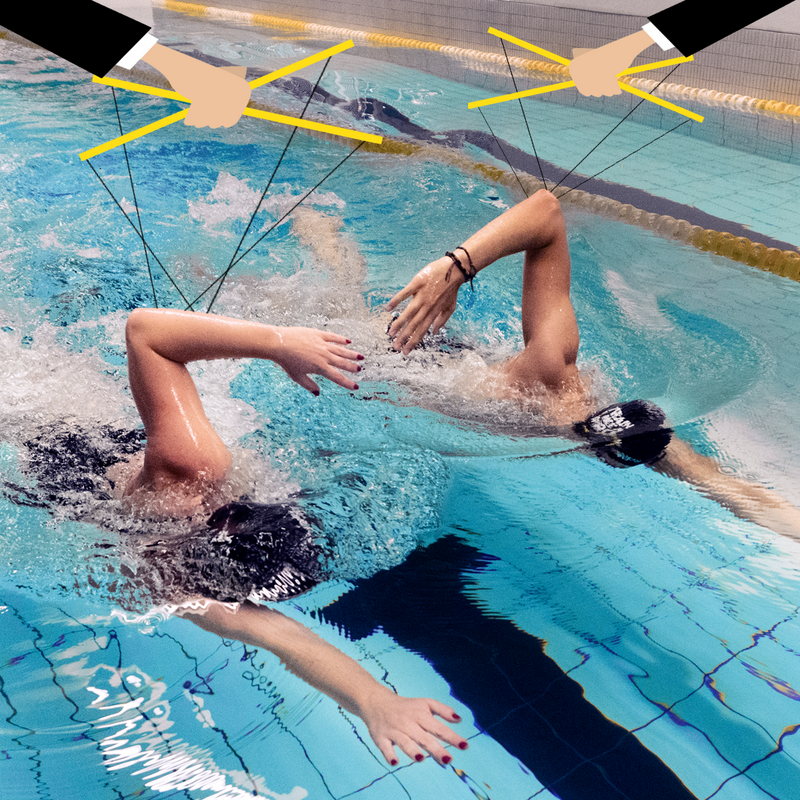Swimming blog - RECOVERY Arm recovery: the key to a smooth freestyle
We have all seen competitive swimmers swim with such ease and smoothness. The way their arms move over the water looks like it does not cost them any energy at all. The arm recovery is when swimmers take a tiny break from swimming after each pull-through. So how do they do it? Let's answer 5 burning questions about the arm recovery.
When your hand exits the water at your hips, until your fingertips hit the water again in front of your shoulder, is what we call the 'arm recovery'. The arm recovery is an important part of the stroke to master, as it influences your body position, arm tension and hand entry. It helps you swim a smooth freestyle. And, a technically correct recovery will help prevent shoulder injuries.
What makes a good recovery?
A good recovery is when your elbow leads the recovery. The easiest way to explain this, is by using your imagination. Imagine there is a string tied to your elbow. As the hand exits the water at your hip, the string pulls the elbow up so the elbow is facing the ceiling. The elbow keeps moving upwards until it is in line with the shoulder, your hand is relaxed. When your elbow is in line with your shoulder, the hand will naturally take over, and will get ready for the hand entry.
What is the most common mistake?
The thing we see most often with beginning and intermediate level swimmers, is that the hand leads the recovery. This means that when the hand exist the water at the hips, the hand is driven forward. This causes instability and the body to sink or snake through the water. When the hand leads the recovery, is does not only influence the recovery phase, but a good hand entry as well.

What happens when you do it wrong?
A hand-led recovery does not only disturb the body position, but it places a large amount of strain on your shoulder. Your shoulder and arm are tense for the whole recovery, and do not actually have a chance to recover. This tires you out very quickly. It also brings the shoulder in a compromising position which could lead to shoulder injuries.
How can you practice your arm recovery?
A smooth arm recovery goes hand in hand with proper body rotation. If you remain on your stomach while swimming freestyle, it is impossible to let the elbow lead the recovery. Practicing drills such as the Sidekick Shoulder Tap of the Fingertip Drag improves both body rotation as well as the arm recovery. Quick tip: when swimming freestyle, make sure to open up your arm pit during the arm recovery. It makes the elbow point upwards and frees the shoulder joint of any strains.
Is there a different recovery for open water swimmers?
Well, no. Triathletes and open water swimmers still need to lead with the elbow but it looks different because they will generally recover with a straighter arm, opening up at the elbow. This allows for the hand to be higher above the water, free from waves and other swimmers.
So practise an elbow led arm recovery and become stable, injury free and adaptable to any conditions. Follow our Arm Recovery Course to make sure you are recovering the right way.